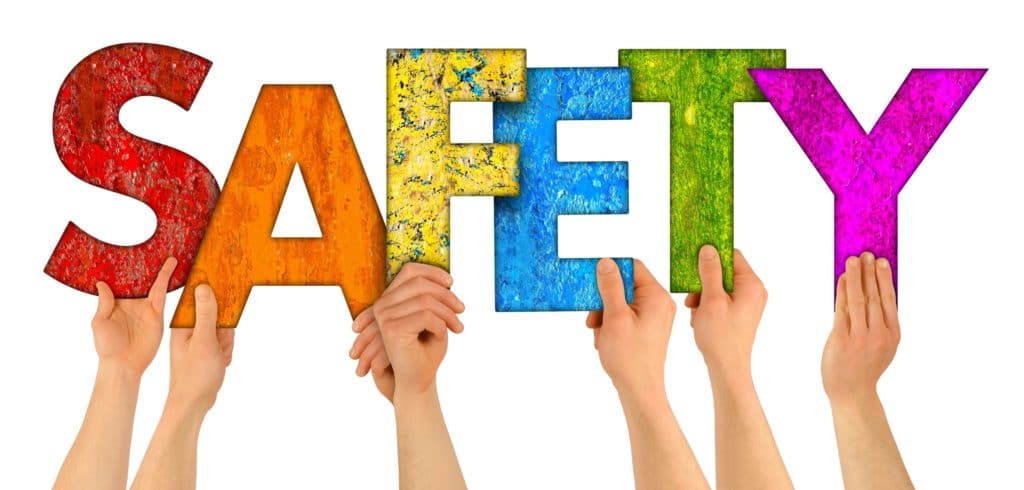
One of the top concerns of any child care business is safety and security. With COVID-19 still ever-present across the country, child care providers are navigating an added layer of challenges to ensure the health and wellbeing of children, staff and families.
That’s why we called on Jason Russell, founder and President of Secure Education Consultants. Jason served in the U.S. Secret Service and combines his law enforcement knowledge with his child care experience (his wife owns five centers) to advise child care businesses on helpful strategies and tips they can use to keep staff and children safe.
In a recent Procare webinar, Jason talked about some of the key emerging threats in today’s environment and ways to de-escalate the situation when it becomes heated.
Emerging issues and threats

Jason highlighted several issues around security that have cropped up over the past year.
“Of course, one of the biggest issues is around masks,” said Jason. “Because they have become such a political issue, you have those who don’t want to comply, and that can create confrontation in a time when you’re doing everything you can to limit close contact.”
In addition, masks can create issues with communication. According to Jason, 70-80% of communication is nonverbal, which means we’re losing a lot of our ability to communicate and understand others because much of our face is covered. This can lead to added stress and misunderstanding among child care staff and parents.
Another issue? Contact tracing. These days, health department officials are relying more on child care businesses to do their own contact tracing due to backlogs.
“By the time they get to your case, quarantine is over, so it’s incumbent on the centers to manage,” Jason said.
What is contact tracing? It’s the process of determining who had contact with the infected individual. According to the CDC, it’s important to keep of record of those who have been in close contact with the person. Close contact is defined as being within six feet of an infected person for a cumulative total of 15 minutes or more over a 24-hour period starting from two days before illness onset (or, for asymptomatic patients, two days prior to test specimen collection) until the time the patient is isolated.
Jason advised to ensure you’re aware of HIPAA regulations around contact tracing, and to avoid asking for too much medical information or providing medical advice.
Communicate, communicate, then communicate some more
The pandemic is creating new, unfamiliar and uncomfortable changes for many, and that can lead to fear- and/or anger-driven outbursts from members of the families you serve. That’s why it’s important to make sure front-line staff members are trained on communication, particularly when it comes to non-verbal and verbal warning signs, so they know how to diffuse a potentially dangerous situation.
“This is a time where it’s better to overcommunicate,” said Jason. “Set expectations with your staff that makes it clear the importance of communicating regularly with the families you serve and other team members. The more you communicate, the more you can mitigate confrontations.”
De-escalation strategies

De-escalation is a skill, not a science, and its success is dependent on a variety of factors, including:
- Not taking things personally
- Maintaining control of yourself first
- Making safety the top priority – always
Jason and his team use a three-step process to train on de-escalation: Set the tone, empathize, and close with options and expectations.
Set the tone
- Set the tone with the greeting and ask an open-ended question if possible, such as “Hi, how are you doing? What’s the weather like out there?” That way, it makes it harder for the person to answer in an angry way than if you asked a question that elicits a yes or no response.
- Pay attention to your body language, including posture, distance from person, eye contact and gestures. Are you facing the person and do you have an open body posture? This type of body language relays to the person that you’re listening. Aim to avoid crossed arms or clenched fists, which can come across as aggressive. If it’s a tense conversation, maintain a little more physical distance to increase your safety in case the situation escalates.
- Reduce distractions by having your conversation in a place where you won’t have a lot of spectators. Sometimes people can feel like they’re being backed into a corner if there’s an audience.
- Maintain a normal tone of voice and avoid “no-go” phrases such as, “You need to calm down,” “That’s not my problem” or “Because I said so.” These will only aggravate the person. The key is to listen more than you talk and remember that this person is coming to you because they’re not getting their needs met and want to be heard.
Empathize
- Listen 70% of the time – as we stated above, people want to feel like they’re being heard.
- Ask open-ended questions for clarification or as a distraction technique to throw someone off who may be escalating.
- Explain the why behind the policy, issue or other situation that is upsetting the individual. They may not like the reason, but at least knowing there IS a reason rather than it being some arbitrary rule can help them calm down.
- Get on their team by acknowledging their problem and letting them know you want to work with them to resolve the issue. If appropriate, you can consider telling them you don’t like the policy either. For example, “I realize wearing masks is uncomfortable – I don’t like it either – but it helps keep everyone safer.”
Close with options and expectations
- Make it clear what next steps are. “This is what’s going to happen, here’s the reason why this is happening, etc.”
- Recognize their point of view, and offer options if possible.
- If you can, make them part of the solution. For example, “I know you don’t like this new policy and I don’t like it either, but it’s important to keep everyone as safe as possible. Can you help me out and follow the new policy?”
- Make sure to include why you’re taking the action or instituting the new policy. They may not like it, but it helps in how they receive the information.
- Have a backup plan. Your physical safety is paramount, so if things go sideways, know next steps (for example, call the police).
One last thing to remember – don’t drop your guard on traditional safety issues. Continue to do fire drills and other practice runs of emergency situations. And if a real emergency like a fire does occur, do not get caught up with social distancing or mask requirements – the most important focus is getting out of the building quickly and safely.
To watch the webinar recording and learn more about how you can keep your child care business safe and secure, click here.



